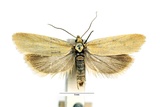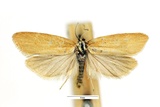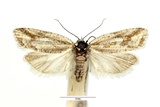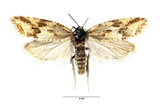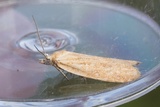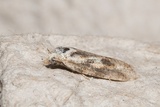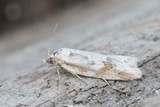Cnephasia longana (Haworth, 1811) Species
Last modified: Nov. 9, 2023, 12:55 p.m.
The only Belgian Cnephasia that can be recognized by external characters. Hitherto a very rare and local species in Belgium, more distributed in the north, especially along the coast.
Details
- Classification
- Family: Tortricidae > Subfamily: Tortricinae > Tribus: Cnephasiini > Genus: Cnephasia > Subgenus: Cnephasia > Species: Cnephasia longana
- Vernacular names
- Topbladroller (NL), Long-winged Shade (EN), Ährenwickler (DE)
- Synonyms
- Cnephasia stratana (Zeller, 1847) and Cnephasia loewiana (Zeller, 1849)
- First mention in Belgium
- Fologne E. 1859b. Supplément au catalogue des lépidoptères de Belgique. — Annales de la Société entomologique belge 3: 133–142. On page 134.
- Status
-
Native
Distribution
Genitalia
Male: sacculus short and straight, robust aedeagus with terminal teeth.
Female: colliculum thickened at both sides, clear chanel above ostium.
Bionomics
After hibernation as a first instar, the larva lives in a silken hibernacula, it first mines a leaf, then lives between leaves spun together, in spun flowers and terminal shoots.
The moths are active in the evening and later come to light.
Flight periods
The adults have mainly been observed from June till late August, with most observations during July.
Observed on
- Substrates:
- Herbaceous plants
The polyphagous larva feeds on a wide range of low-growing herbaceous plants like Chrysanthemum, Anthemis, Ranunculus, Iris, Lilium, Lychnis, Papaver, Dianthus, Humulus, etc...
Habitat
It occurs in a wide range of habitats.
